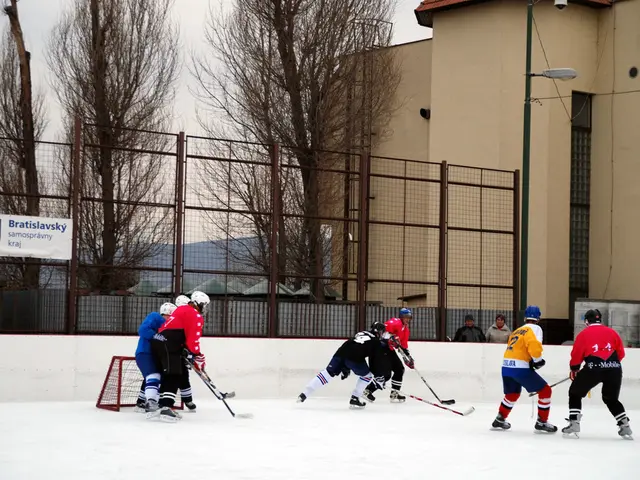Dislocated Shoulder: Understanding the Cause + 5 Course of Actions if You Suspect It
A dislocated shoulder, a joint injury that occurs when the head of the humerus (upper arm bone) is forced out of the glenoid (shoulder socket), requires immediate attention and proper treatment. If you suspect a dislocated shoulder, resist the urge to self-treat as this could potentially exacerbate the injury.
In an ideal scenario, seek assistance from a trained professional, such as a doctor or athletic trainer, who may attempt to relocate the joint. This situation typically necessitates prompt medical attention and a visit to the emergency department.
According to Dr. Salvatore Frangiamore, an orthopaedic surgeon at Cleveland Clinic, the most significant risk factors for a dislocated shoulder include sports injuries and falls, where the arm is typically outstretched and subjected to a sudden, twisting or jerking motion. While those participating in contact sports like football are more susceptible, the injury can also occur during routine activities.
The severity of the pain and the likelihood of recurrence are high with traumatic injuries. In some patient populations, the recurrence rate can reach as high as 80%. Surgical intervention may be necessary, especially for recurrent dislocations or young athletes with a higher risk of re-injury.
Individuals with exceptional flexibility, often self-described as "double-jointed," are more prone to dislocations due to natural joint laxity. Athletes engaging in sports involving repetitive overhead motion, such as swimming, volleyball, or tennis, may also experience an increased risk.
Following an injury, Dr. Frangiamore recommends the following steps for treatment:
- Immediately immobilize the shoulder and apply ice to reduce swelling.
- Seek prompt medical attention to have the shoulder relocated without causing further damage.
- Follow your doctor's recommendation for using a sling to support the arm during the healing process.
- Rest, limit motion, and allow tissue to heal.
- Work closely with your doctor to develop a long-term plan for injury prevention, which may involve physical therapy and, in some cases, surgery.
Through proper medical care and rehabilitation, it is possible to minimize the risk of future shoulder injuries. Physical therapy is crucial for restoring function and preventing future dislocations. Regular follow-ups with your healthcare provider are also essential to monitor progress and adjust treatment as needed.
- Areas like fitness and exercise, health and wellness, and even certain sports, such as football, can increase the risk of dislocated shoulders, given the repetitive and sudden motions involved.
- Chronic kidney disease, medical conditions, and chronic diseases can also affect joint health, potentially increasing susceptibility to injuries like dislocated shoulders.
- The treatment for a dislocated shoulder often includes immobilizing the affected area, following by medical attention to relocate the joint, using a sling during recovery, limiting motion, and rest.
- In cases of recurrent dislocations, particularly with young athletes, surgical intervention might be necessary to reduce the risk of re-injury.
- Science plays an essential role in understanding the causes of joint injuries like dislocated shoulders, as well as in the development of treatments and prevention strategies.
- Regular sports injuries, falls, and even routine activities can lead to a dislocated shoulder, reinforcing the importance of proper care and treatment for joint injuries.





